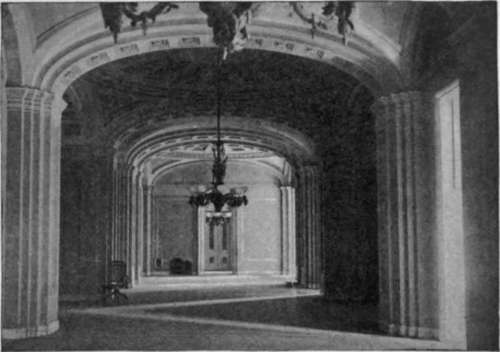Statue Of Hancock
Description
This section is from the book "The National Capitol. Its Architecture Art And History", by George C. Hazelton, Jr. Also available from Amazon: The National Capitol Its Architecture Art and History.
Statue Of Hancock
At the foot of this beautiful staircase stands a marble statue of John Hancock, the first signer of the Declaration of Independence. On the base are inscribed these words : **. He wrote his name where all nations should behold it, and all time should not efface it." They recall his signature on that immortal document, almost the only one which time has not nearly obliterated, and his alleged reply when asked why he wrote so boldly: "So that George III. can read it without putting on his glasses." Horatio Stone, the sculptor, received $5,500 for this work.
* His speech in the House of Burgesses May 29, 1765, on the Stamp Act, helped to bring Virginia to the stand already taken by the New England States. In vindicating his resolutions, objected to by Robinson, the Speaker, he said: "Caesar had his Brutus— Charles the First, his Cromwell—and George the Third—{' Treason ! Treason !' resounded from the neighborhood of the chair)—may pro/it by their examples. Sir, if this be treason (bowing to chair), make the most oj it /"

MAIN CORRIDOR OF THE SENATE.
Continue to:
